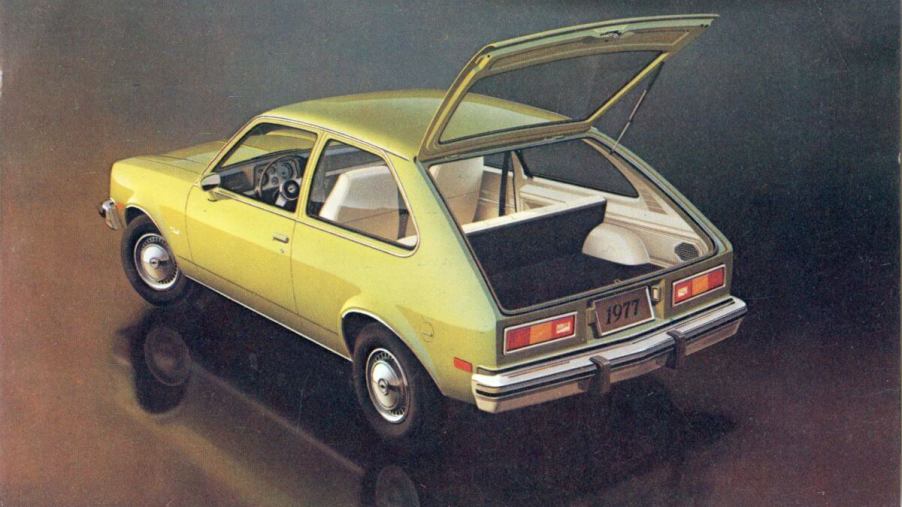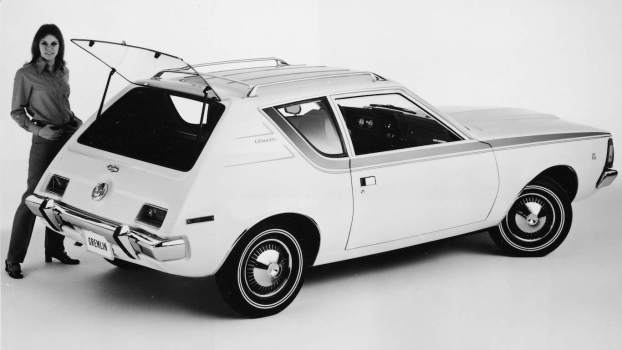
1 Pontiac Hatchback Was So Slow Its 0-60 Time Looks Like a Typo
From 1976 to 1987, Chevrolet produced its much-maligned Chevette, the (sorta) American alternative to compact, fuel-efficient Japanese cars like the Honda Civic that were eating GM’s proverbial lunch. The Chevette was also a direct response to the new Corporate Average Fuel Economy regulations that took hold following the 1973 oil crisis.
In 1981, General Motors decided that its Pontiac division needed its own economical subcompact. The path of least resistance was to rebadge the Chevette as the slightly more upscale Pontiac T-1000. Later, Pontiac dropped the T, and it was just called the 1000. Road tests of the time reveal the 1000 to be one of the slowest modern Pontiacs ever, if not the slowest modern car, regardless of manufacturer. By comparison, the ill-fated Yugo performed like a Lamborghini next to the 1000.
The Chevette was better and worse than the Vega it replaced
By the late 1960s, the handwriting was on the wall that General Motors needed a smaller car in its lineup to remain competitive against the trickle of foreign automakers gradually gaining traction on American soil. That car was the 1971 Chevy Vega, a pet project of Chevrolet’s then-general manager, John DeLorean.
The Vega had its share of flaws, like rusting before it left the showroom floor, an aluminum engine that warped, and a gasoline tank with a penchant for catching on fire in collisions. Still, there’s no denying that the Vega was a great-looking vehicle and even won MotorTrend’s prestigious Car of the Year award before its problems started to surface.
The Vega’s successor in 1976 — with some overlap between the two — was the Chevette, which was decidedly less sporty than the Vega. The T-platform on which the Chevy Chevette was based was co-developed with automakers Opel and Isuzu. Initially only available as a three-door hatchback (two passenger doors, plus the cargo area hatch), a five-door hatchback joined the party in 1978.
Under the Chevette’s hood was either a 1.4-liter or 1.6-liter four-cylinder, both from Isuzu. The Chevette’s output ranged from a pitiful 53 horsepower to a merely pathetic 70 horsepower, depending on year. In the early 1980s, a diesel variant was also offered.
Pontiac gets its own small hatchback
As mundane as the Chevette was, it filled a need for a cheap domestic subcompact, and by 1979, it was the best-selling small car in the United States. Ditto for 1980. Based on that success, it was decided that Chevy’s sibling, Pontiac, also needed a subcompact in its lineup. Of course, the quick and dirty path forward was to badge-engineer the existing Chevette right into Pontiac dealerships, which is exactly what happened.
Dubbed the T-1000 — later just the “1000” — Pontiac’s econobox shared all of its sheet metal with the Chevette. Only a different grille, exterior lighting, and some blacked-out trim served to externally differentiate the two. So, just to be clear, the T-1000 was a rebadged Chevrolet with an engine from Isuzu. Right.
The Pontiac 1000 was agonizingly slow
No discussion of the Pontiac 1000 would be complete without mentioning MotorWeek‘s hilarious review of a 1982 three-door hatchback model. Equipped with a lethargic automatic transmission, the test car took a full 30 seconds to accelerate from 0 to 60 mph. Yes, it takes half a minute to reach 60 mph. To be fair, MotorWeek mentions that acceleration up to 55 mph, while still slow, was at least minimally acceptable. It was achieving the last few mph where the 1000 really struggled.
Perusing some other vintage reviews, MotorTrend tested a 1.6-liter Chevette with a manual transmission and clocked a 0 to 60 mph time of 15.8 seconds. Nowadays, vehicles with automatic transmissions are frequently quicker than their manual counterparts, but historically, this wasn’t the case. Until fairly recently, the fluid coupling of an automatic transmission’s torque converter robbed considerable horsepower. Additionally, automatics typically had fewer forward gear ratios than manuals. Oh, how the times have changed.
Worth mentioning for fun, Chevy’s other Vette, the Corvette, took 8.1 seconds to hit 60 mph in 1982. Nowadays, a plain vanilla C8 Stringray hits 60 mph in about 2.8 seconds, while some EVs like the Tesla Model S Plaid can do the deed in under 2 seconds flat.
It was still a little nicer than a Chevy Chevette
On a positive note, the Motor Week review mentions that the Pontiac 1000’s interior has a higher level of fit and finish than the Chevette, and in particular, the upholstery bested many Japanese models. The publication also praised the cargo area, which was voluminous for a car of the 1000’s size, especially with the rear seat folded down near flat.
The base price for a 1982 Pontiac 1000 was $5,582 (nearly $18,000 in today’s dollars), although air-conditioning, automatic transmission, and a few other options drove the test sample’s price to $7,200. After a shortened 1987 model year, both the Chevette and the 1000 were discontinued. In total, more than 7 million T-cars were sold worldwide. Just don’t get one with an automatic.




